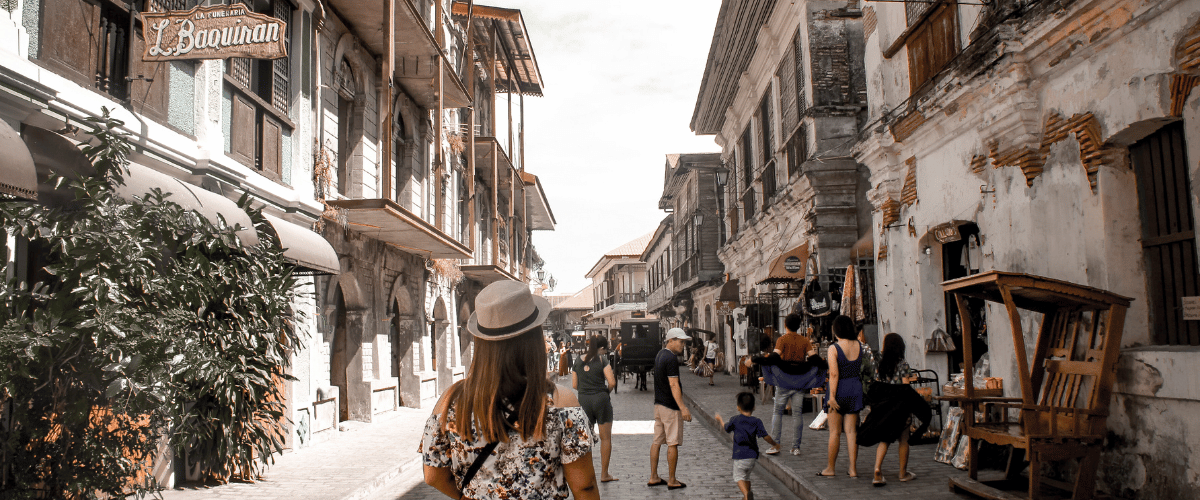Places to Visit in Philippines You’ll Wish You Found Sooner
When you think about places to visit in Philippines you’ll find quiet islands lively towns and unforgettable moments that stay with you long after

Get eVisa
via Horved

Travel Insurance
Via nomads
Table of Contents
Which activities can be best done in the Philippines?
The cultural, natural, and urban offerings in the Philippines are centered in Manila, whose historic Intramuros and museums, as well as Cebu’s and Davao’s beaches and lively markets, all conjure captivating experiences.
What activities are popular in Manila?
Touristic activities and sites a visitor cannot miss in Metro Manila are Intramuros, National Museum, Divisoria Market, and enjoying the vibrant nightlife of Makati and Bonifacio Global City.
What Philippine cultures do tourists usually find appealing?
Explore centuries-old Spanish churches, wander through historic heritage neighborhoods, and enjoy mesmerizing traditional folk dance performances.
What Filipino food do you recommend?
Quite likely popular of all balut, served with taho, as well as iconic savory adobo, tangy sinigang, and festive lechon also wondered for their culinary world tours.
Where can I go for a wellness retreat in the Philippines?
Some notable ones are beachfront resorts in Palawan which offer yoga and spa treatments, as well as mountain retreats focusing on Ayurvedic and holistic healing.
What’s the ideal season to travel to the Philippines for the best weather conditions?
For travel, the dry season from November to April is preferable as it is not overly rainy, sunny, and not filled with typhoons.
What adventure travel activities can I do in the Philippines?
Some activities include world-class scuba diving, surfing, hiking volcanos such as Mayon, and canyoneering in places like Cebu.
Which places in the Philippines are perfect for rural tourism?
Visit hidden gems such as Sagada with its mystical Siquijor Island, Camiguin’s waterfalls, and the Kalinga tribal villages.
What traditional festivals in the Philippines are worth experiencing?
Make sure to experience the lively Up and Down the Street dances in Sinulog, the colorful Ati-Atihan, the flower filled street carnival for Panagbenga Festival, and the theatrical church processions for Flores de Mayo.
What are the best Philippine Souvenirs to buy?
Remember to pick up a few things like handcrafted Barong Tagalog shirts, exquisite pearls, local snacks like dried mangoes, and crafts depicting Filipino culture.




Find Hotles
via booking,com

Find Hostels
via Hostelworld

Find Rental Car
via sunny travel

Find Flights
via skyscaner

Book A Bus
via 12Go

Get Visa
via ivisa

Get Travel Insurance
via heymenda

How To Pack
our tips
Modern Cities & Culture in the Philippines
Cities Alive with Spirit and Stories
As cities like Manila and Cebu evolve into modern hubs, they continue to carry the soul of the Philippines in every corner. With deep cultural roots and a proudly diverse community, the urban landscape here is a living blend of tradition and progress. Stroll through lanes lined with remnants of the Spanish era, echoing karaoke tunes, and bustling food stalls, and you’ll uncover a nation pulsing with rhythm, hospitality, and daily traditions. As 2025 approaches, Filipino cities offer experiences where heritage, faith, and festivity seamlessly blend into unforgettable moments..
Urban & Cultural Highlights
Manila – The Historic Soul
Take a step into Intramuros, the walled old city of Manila, where horse-drawn carriages glide on cobblestone streets and the remnants of the Spanish past still linger.
Explore San Agustin Church, the oldest stone church in the nation, renowned for its beautiful interior and historical value.
Visit the National Museum and Rizal Park to understand the country’s strife, pride, and identity.
Cebu – The Heart of the Islands
Visit Magellan’s Cross, a reminder of the Philippines’ colonial history and Christian heritage.
Walk down Colon Street, the country’s oldest street, lined with stores, history, and local culture.
Shop at Taboan Market, renowned for dried seafood, mangoes, and unusual local foods.
Cultural Experiences
Local Food Culture – Filipino meals are usually shared, delicious, and established in family tradition. Sample standbys like sinigang, lechon, or halo-halo at modest eateries as well as busy food courts.
Jeepney Rides – Ride a colorful jeepney to see how locals get around during the day. Each ride is an adventure.
Street Festivals – Almost every town has a lively fiesta full of dancing, music, and religious significance. In the city, you may find parades or traditional shows in public squares.
FAQ – Urban Travel in the Philippines
Is Manila walkable?
Areas of Manila such as Intramuros, Binondo, and Makati are walkable and wonderful to explore on foot, although traffic and heat can prove to be difficult.
Can you use credit cards?
Yes, particularly in shopping malls, restaurants, and hotels in large cities. Although most small shops and markets still want cash.
What language do they speak?
Both Filipino and English are commonly spoken, especially in cities, so travelers will find it easy to communicate and get around.
Did You Know?
Manila boasts one of Asia’s most dense collections of Spanish colonial churches and structures, a testament to more than 300 years of colonial rule.
Pro Tip
When entering churches or religious sites, dress respectfully. Cover shoulders and knees, and remove hats upon entry—it’s a small gesture with big meaning.
Conclusion: Layers of Legacy
Philippine cities are full of life, heart, and history. From quiet prayer corners in ancient cathedrals to the vibrant chaos of city markets, each moment offers a window into the nation’s soul. Soak in the rhythm, savor the flavors, and feel the warmth—these are the memories you’ll take with you.

History & Heritage in The Philippines
The Confluence of Time
The Philippines is rich in history, from pre-colonial history to centuries of Spanish colonization, and from American colonization through the modern period and beyond. As of 2025, the country’s heritage sites are still important in making sense of the nation’s spirit. Spend time in ancient churches, as well as ancestral homes and plazas where revolutions stirred. Be it Vigan’s cobbled streets or Manila’s walled Intramuros, every stone has stories to tell. The vibrant culture allows travelers to time travel.
Historical Sites You Can’t Miss
Intramuros, Manila
Learn about Fort Santiago, the jail where José Rizal and other notable figures were detained.
See the UNESCO World Heritage Site, San Agustin Church.
Stroll cobblestone streets and ride a calesa (horse-drawn carriage).
Vigan, Ilocos Sur
Explore Calle Crisologo, which is dotted with antique stores and mansions from the colonial era.
Visit the Syquia Mansion Museum for a glimpse of the life of the Filipine elite.
Watch the traditional pottery and try local empanadas served at the stall.
Taal Heritage Town, Batangas
A must-see is Taal, Asia’s largest basilica.
There are many ancestral houses with Spanish-era architecture that are preserved and can be visited.
Engage with historical museums and traditional embroidery workshops.
Cultural Immersion Ideas
Participate in old towns and historic districts heritage walking tours.
Investigate the Semana Santa or Santacruzan processions to learn about certain facets of religious customs.
Filipino resistance movements and national heroes can be learned through guided visits to the museum.
FAQ – Heritage Travel in the Philippines
Towns that are considered heritage are safe to visit, right?
Yes — most are well-kept and have guided tours and tourist infrastructure.
Do heritage sites have an entrance fee?
Some do charge an entrance fee, which can be quite nominal. Guided tours might be charged separately or at a higher rate.
Are those areas suitable for families and children?
Absolutely! Children love the rides, the open plazas, and the interactive museums.
Did You Know?
The Philippines is home to three Baroque Churches of the Philippines which are UNESCO World Heritage sites. These churches showcase colonial baroque architecture modified for earthquake-prone regions.
Pro Tip
Make sure to bring water and a hat. Walking is often part of historical tours, and it is usually done under the tropical sun.
Conclusion: A Story Etched in Stone (50 words)
Embark on a journey through eras and regions of the Philippines, exploring ancient Spanish forts and rustic towns that proudly showcase the country’s rich heritage. History enthusiasts or not, every traveler will appreciate and find themselves deeply connected to the tales of struggle and strength etched in every living landmark.
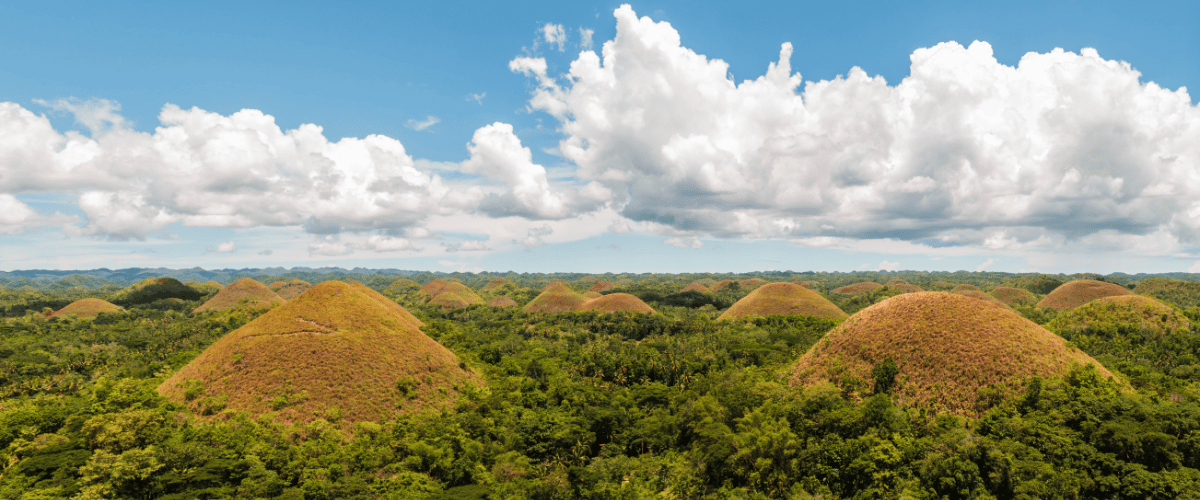
Food & Drink in the Philippines
A Flavorful Journey Through the Islands (80 words)
Filipino dishes have evolved through time incorporating various cultures such as the indigenous tribes, Spanish colonization, with modern regional influences adding to the rich tapestry of the country’s culinary offerings. The eating experience is uniquely Filipino, affectionate and festive culture. From small kombinis to elaborate celebrations, food is deeply integrated into Filipino culture. Family recipes or modern spins on jeeps with warm hospitality are enjoyed and shared at every event showcasing the bold flavors of the islands.
Must-Try Dishes
Adobo
Chicken or pig cooked in vinegar, soy sauce, and garlic is the national dish.
Found everywhere, but each household has its own secret version.
Sinigang
A sour tamarind-based soup with pork, shrimp, or fish.
Best enjoyed with rice on rainy days.
Lechon
Whole roasted pig, a centerpiece of celebrations.
Cebu is famous for its crispy-skinned, flavorful lechon.
Kare-Kare
A rich peanut stew with oxtail and vegetables.
Often paired with bagoong (fermented shrimp paste) for extra punch.
Street Food & Local Eats
Try isaw (grilled chicken intestines), kwek-kwek (battered quail eggs), and balut (duck embryo).
Sip fresh buko juice from a coconut stand.
Explore night markets for affordable local delicacies.
Drinks & Desserts
Beat the heat with halo-halo, a refreshing dessert featuring a medley of sweet beans, fruits, and leche flan on shaved ice.
Taste taho — steamed warm tofu garnished with syrup and sago pearls which morning vendors sell.
Don’t skip San Miguel beer, a local favorite.
Culinary Experiences
Enroll in a cooking class in Manila or Cebu to learn family recipes.
Go on a food crawl in Pampanga, known as the culinary capital.
Go to seafood markets and grill your catch right on the beach.
FAQ – Culture Food Filipino
Is Filipino food spicy?
Most dishes are savory, sour, or sweet. However, spicy condiments are available.
Are there vegetarian options?
Yes, though limited in rural areas. Most urban restaurants tend to offer vegetarian or vegan options.
Can you drink tap water?
It’s safer to stick with bottled or filtered water, especially outside major cities.
Did You Know?
With top production of pineapples and bananas, the Philippines has some of the best local markets in the world.
Pro Tip
Filipino food is not one to judge by a single meal. With regional diversity, you are always one island away from something entirely different.
**Filipino Cuisine is More than Food – Shared Experience**
Filipino cuisine invites us to connect people to culture and capture the warmth, resiliency, and joy that characterize the Filipino way of life. Each meal allows you to experience unique togetherness and a glimpse of the rich Filipino heritage, therefore, come satiate your hunger and curiosity.
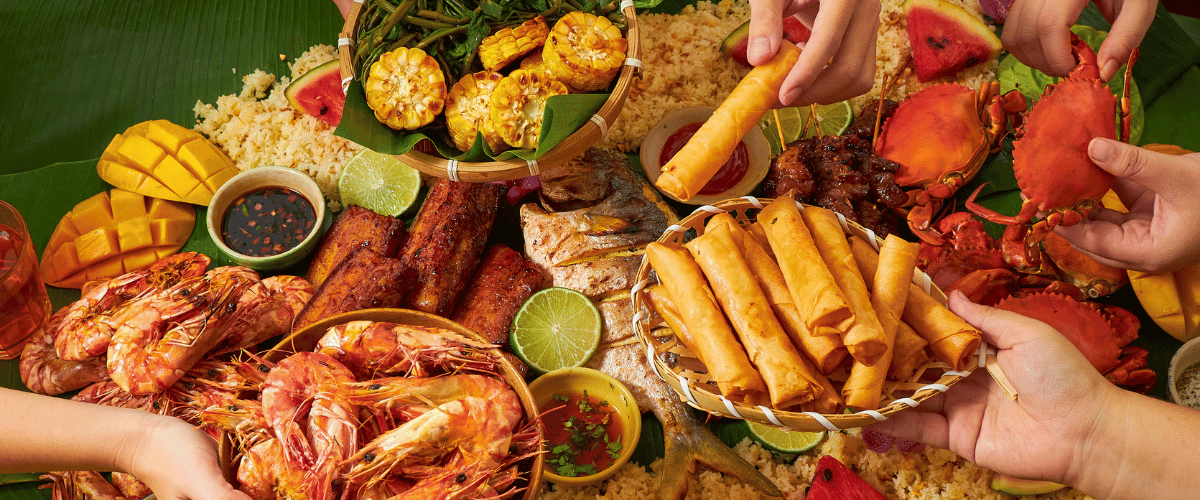
Relaxation and Wellness Holidays In The Philippines
Philippines: An Ideal Retreat For Relaxation And Wellness Journeys
The inviting shores, majestic mountains, and tranquil pace of life make The Philippines one of the top places to escape for wellness. The country’s islands feature holistic healing retreats such as yoga and massage. Whether you wish to detox from your hectic lifestyle or cradle in serenity, The Philippines provide boundless nurturing experiences. Wrapped in heartfelt hospitality and breathtaking landscapes, there is something for the body and soul.
Top Relaxation and Wellness Destinations
Palawan
Home to luxurious spa resorts encircled by the sparkling turquoise water.
Beach yoga and sunset guided meditations.
Siargao
Not only famous for surfing, this island is home to quiet boutique wellness resorts.
Perfect for a relaxing digital detox and slow island living.
Batangas
Only a couple of hours from Manila.
Weekend getaways to mountain spas, hot springs, and eco-friendly resorts.
Bohol
Provides calm with riverside retreats and hilltop vistas including riverside views.
A great area for nature walks and healing massages.
Spa & Massage Experiences
Experience hilot, the Filipino healing massage with coconut oil and banana leaves.
El Nido spa boats will gently float you into bliss with treatments during the spa.
In the mountains of Luzon, enjoy volcanic mud wraps and herbal baths.
Wellness Activities
Daily yoga and pilates at coastal resorts.
wellness classes including everything from plant-based cooking to sound healing.
Silent meditation and forest bathing at eco-retreats.
Mindful Nutrition
Farm-to-table dishes, seafood, tropical fruits.
Lemongrass, ginger, and local botanicals are used to brew herbal teas.
Many resorts cater energizing and cleansing vegan/vegetarian meals.
FAQ – Relaxing in the Philippines
Are wellness retreats suitable for beginners?
Yes, most retreats welcome all levels and have introductory level sessions.
Is it expensive?
From luxury villas to budget eco-lodges with wellness features, there is something for everyone.
Do I need to book in advance?
For popular islands, it is better to book early during peak seasons (Dec–Feb).
Did You Know?
The Philippines has over 7,000 islands, many of which are uncrowded, ideal for peaceful retreats.
Pro Tip
For quieter travel, consider May or October for cooler temperatures, lower prices, and less crowded locations.
Conclusion: Restore, Reconnect, Revive (50 words)
In the context of relaxation, the Philippines refers to more than stopping: it is a route to recovery, including floating in lagoons or meditating under palm trees. Relax. Let go, the islands coax you back to equilibrium.
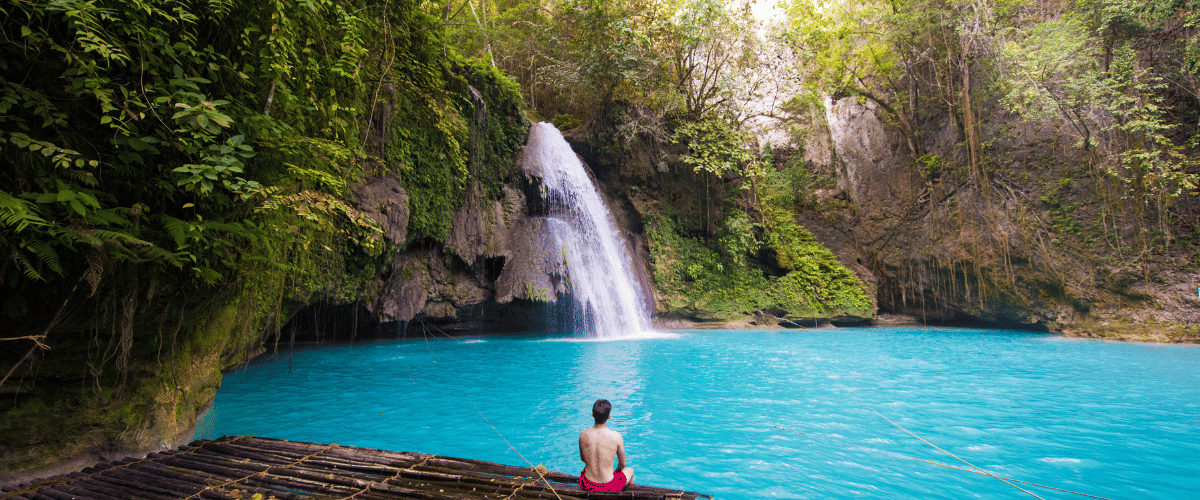
Nature & Seasons in the Philippines
Timed by the Tides & Seasons (80 words)
Climate and geography dictate the pace of life in the Philippines due to the 7000 islands that make the country. Covering verdant mountains alongside stunning beaches creates unforgettable travel experiences. In 2025, knowing when and where to go makes all the difference, whether you are chasing waterfalls, diving with whale sharks, or exploring rice terraces. The unique geography means strong rainfall in one region during dry season in another, allowing for seasonal travel based on the landscape.
Seasons at a Glance
Dry Season (December to May)
Highest Travel Demand
Sunshine and clear skies. Excellent for a day at the beach.
Ideal for attending diving festivals, island hopping, and visiting multiple islands.
Rainy Season (June to November)
Expect bursts of rain showers, especially in the early afternoons.
Reduced tourist activity, verdant landscapes, and discounted rates.
Keep an eye on the forecasts! The months of August through October have the most typhoon activity.
Weather Considerations by Area
Northern Luzon (Banaue, Baguio)
Rice terraces can be appreciated from March to May.
Central Luzon and Manila
December through February is the best time to visit, however watching out for the sweltering heat and humidity from April until May is essential.
Visayas (Cebu, Bohol)
Expect rain from July to Septemeber.
Visayas (Davao, Siargao)
Best time for surf and dive is March to June.
Key Highlights
January: Hope the wet season allows you to hike the lush green and rain fed landscapes.
April: Excellent diving conditions: crystal clear waters and calm sea in multiple locations around the Philippines.
June–August: Overgorgeous scenery for leisurely rural exploration.
October: vibrant festivals that set off seemless gravitation through cycles and spaces in culture with remarkable flamboyance and blend of colors.
Generally Safe for Travel FAQ – Nature and Seasons in the Philippines
Does July pose safety concerns?
As long as local advisories are checked prior, travel precautions are otherwise safe. Within island travel, there may be some delays due to weather conditions.
Which part of the Philippines has best diving period within range of visibility?
Well known sites such as Tubbataha Reef and Apo Island are touted to have high visibility from February to June.
Why not visit during typhoon season?
Having backup plans and watching the news allow for flexible travel.
Did You Know?
The Tubbataha Reefs Natural Park is a UNESCO World Heritage site and divers’ paradise. It only becomes available from March to June.
Pro Tip
Book inland excursions like Sagada’s caves or Banaue’s terraces during the dry months. Wet season can make these trails dangerously slippery.
Conclusion: Select Your Ideal Season (50 words)
Every month offers something unique in the Philippines. From sunny days spent on powdery beaches to fog-laden mountain mornings, your ideal season stems from your desired adventure. Travel where nature dictates, and the country’s cadence will lead you towards unforgettable experiences.
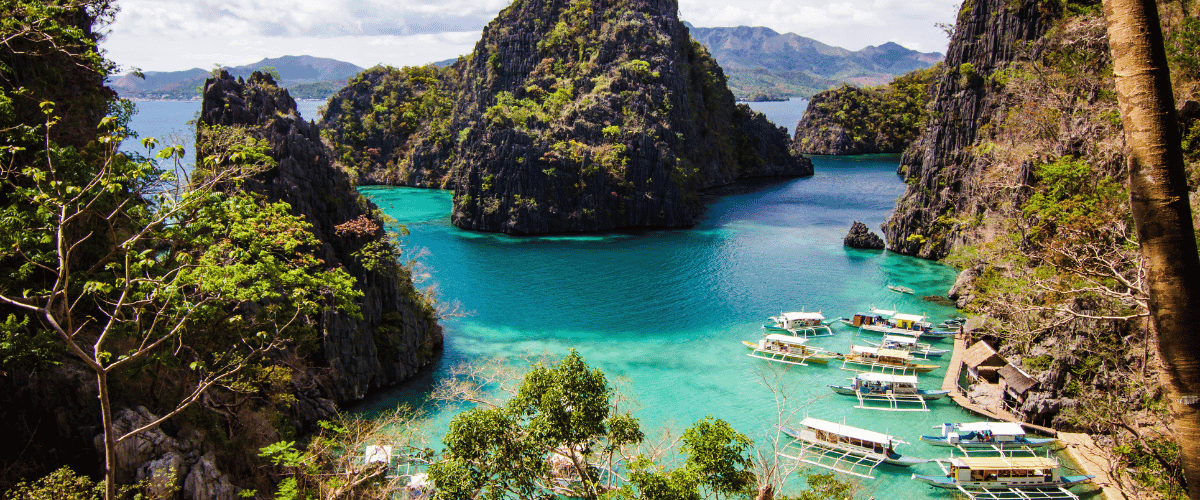
Philippines Adventure & Outdoors
A Thrill-Seeking Playground (80 words)
The Philippines remains a dream destination for adventurers and outdoor enthusiasts. Its landscape continues to present unparalleled opportunities in 2025, ranging from volcanic mountains to even diving thresher sharks in Malapua to canyoneering past waterfalls and exploring coral reefs. Here, raw and breathtaking nature awaits, which adds to the appeal of the outdoor adventures on offer throughout the country.
Top Outdoor Adventures
Scuba Diving & Snorkeling
Tubbataha Reef (liveaboard access only): Untouched corals and ecosystems brimming with marine life.
Apo Island: Abundant sea turtles and vivacious reefs.
The location of the elusive thresher sharks is Malapascua.
Hiking & Trekking
Mount Pulag in Luzon: The “sea of clouds” at dawn.
Mt Mayon (Bicol): Iconic cone-shaped volcano (advanced hikers only).
Osmeña Peak (Cebu): Beginner friendly with panoramic island view.
Canyoneering & Waterfalls
Cliff jumping and river tracing in the blue waters can be done at Kawasan Falls (Cebu).
Tinago Falls (Iligan): Dramatically dropping hidden gem.
Pagsanjan Falls (Laguna): Gorge traditional boat rides.
Ocean Sports & Island Fun
The best waves are found in Siargao, the surf capital of the Philippines, between July and November.
Camiguin: Volcano island offering a new diving hot springs and hiking.
Coron: Trekking through lakes and islands diving into shipwrecks.
Lesser-Known Adventures
Sagada’s caves offer underground rivers and spelunking.
Samar Island comprises of untouched waterfalls and cliffs built from limestone.
Lake Holon (Mindanao) offers camping and stargazing by the crater lake.
FAQ – Outdoor Adventure in the Philippines
Do most outdoor activities require guides?
For rural or marine areas, yes. For safety precautions and local insight guidance is recommended.
Is equipment available for rent?
Yes, expect this in major adventure hotspots such as Moalboal or Siargao. You will need to bring your own equipment to remote regions.
Are these activities tailored for beginners?
Most of them are! Always do research on the trail, weather, and water conditions beforehand.
Did You Know?
The Philippines is one of the most volcanically active places in the world, with over 20 active volcanic sites. It also sits within the Pacific Ring of Fire.
Pro Tip
For a bucket list ideal with two items, try climbing Mt. Pinatubo and afterward visit the hot springs located nearby.
Conclusion: The Philippines Offers a Never-ending Adventures (50 words)
The country is unique for offering unending energy-filled adventures from soaring off steep cliffs to diving deep into reefs and even trekking through foggy mountains. With every Philippine island comes boundless excitement that promises exquisite views, thrills, and unforgettable memories.

Hidden Towns & Villages in the Philippines
Quiet Spaces: Without The Hordes of Tourists (80 words)
To discover the essence of the Philippines, one must seek its quiet places — those that are rich in culture, nature, and offer a familial acquaintance with the locals. In 2025, these remote places with lesser known attractions have potential to provide deep and rich travel experiences at their own pace unbothered by large crowds. From mystical islands to highland tribes, these towns will leave a mark where beauty is found in authenticity and stories are captured instead of being sold.
Charming & Quiet Escapes
Sagada (Mountain Province)
Renowned for hanging coffins, caves, and mountainous regions filled with pines.
Ideal destination for spiritual retreats, sunrise treks at Kiltepan Viewpoint, and cool weather.
Siquijor Island
Gained the title “Island of Fire” due to its folkloric mysticism along with its healing traditions.
The Island boasts mesmerizing white-sand beaches, and mystical waterfalls, filled with sand and enchantment.
Camiguin
A serene volcanic island known for its hot springs, rural cemeteries, and quiet life.
Great location for slow island living as well as hiking and diving.
Kalinga
Head over to Buscalan village and receive a tattoo from Whang Od, the infamous mambabatok.
Walk with the native Butbut people through rice fields.
Batanes
Famed for the iconic rolling hills and stone houses, these islands are situated at a far north-wester corner of the country and are wind-swept and quite remote.
Primarily fitting for cycling and contemplation, it is an entire region that emerges as a haven for bicycles, outdoor enthusiasts, and athletically-inclined people.
What Makes These Places Special?
Unlike other tourist spots throughout the country, there are no luxurious extravagant resorts and big shopping centers—only local residences, hiking paths up the mountains, and the culture itself.
The families whose lives are affected by tourism will directly benefit from it as the culture will be preserved due to the way it is being approached and integrated.
FAQ – Hidden Destinations In The Philippines
Are these places safe?
Traveling to these places provide safety, but the roads and their hospitality certainly need to be improved. Always check local travel restrictions and guidelines first.
Can I get there easily?
Some islands and locations are easily accessible, but others will need long drives, ferries, etc.—all part of the journey!
Is English spoken in these areas?
Basic English is often spoken and understood, but a few local words will be appreciated by residents.
Did You Know?
The Philippines is home to more than 7,600 islands, most of which have wont of exposure to commercialized tourism.
Pro Tip
Rural tourism helps a lot, but demanding a lot of time. Bring cash, offline maps, lots and lots of patience and prepare yourself to travel and explore with no limits.
Conclusion: Real, Raw, and Remarkable (50 words)
The remote villages in the undiscovered regions of the Philippines are not only breathtaking, they also boast unparalleled natural beauty. Every moment spent here nourishes the soul. The most profound forms of travel are those that allow people to listen deeply and reconnect with themselves.
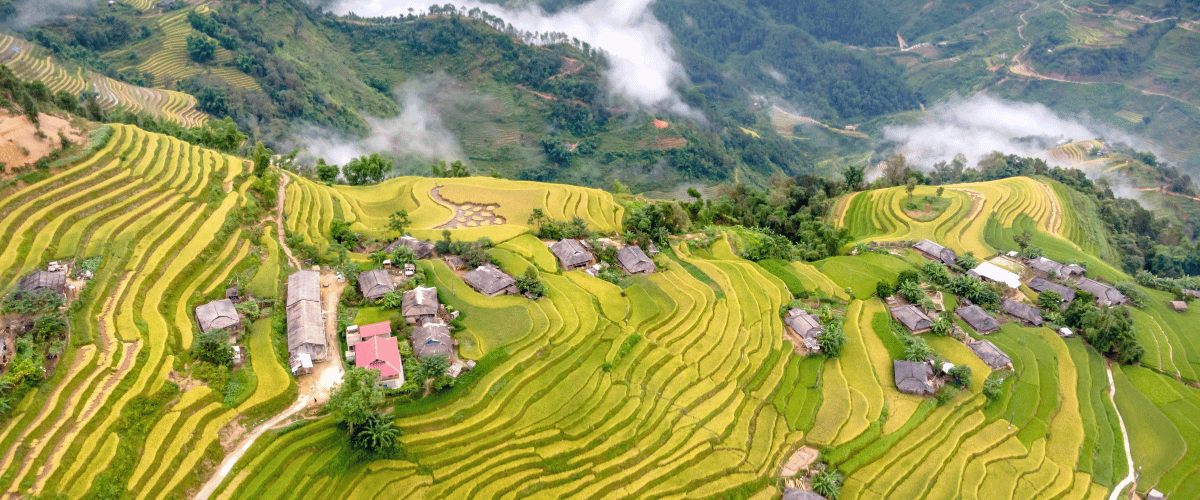
Philippines Festivals & Events
A Country That Celebrates All Year (80 words)
It only takes a brief visit to the Philippines to understand that nothing compares to the unrivaled fervor with which locals celebrate their festivals. Whether partaking in parades or observing as flower-laden floats cruise down the streets, tourists will be treated to vibrant glimpses into the true essence of the nation. In 2025, celebrationcraft serves as a cornerstone of Filipino identity—honoring their saints, the seasons, and stories passed down through generations filled with wholesome exuberance, faith, and delectable cuisine.
Top Traditional Festivals to Catch
Sinulog Festival – Cebu (January)
Drum up intense festive energy alongside a colorful spectacle-laden street parade headlined by extravagant costumed dancers.
Deeply spiritual icon honoring celebration of the Santo Niño (Child Jesus) transformed into a lively cultural event.Ati-Atihan Festival – Kalibo (January)
She is widely recognized as the foremost and most celebrated festival in the Philippines, often hailed as the ‘Mother of All Philippine Festivals.It features tribal face paint, vigorous dancing, and an expression of ancient traditions.
Panagbenga (Flower Festival) – Baguio (February)
A celebration of spring and resilience abundant in blossoms.
Experience flower-laden floats, street dancing, and garden exhibitions in the “City of Pines.”
Pahiyas Festival – Lucban (May)
Hailed in the 16th century as a manifestation of paying tribute to bountiful yields, people adorned their homes with rice wafers and fruits.
A feast celebrated visually and gastronomically.
Kadayawan – Davao (August)
Honors local tribes alongside the region’s diverse fruits and flowers.
Provides a glimpse into Mindanao’s rich culture and agricultural treasures.
Other Noteworthy Events
Flores de Mayo (May): Processions and month-long devotion to the Virgin Mary.
MassKara Festival (October): In Bacolod, people sport smiling masks and partake in spirited street dancing.
In December, the city of San Fernando in Pampanga lights up the Christmas season with its spectacular display of giant, illuminated lanterns during the renowned Giant Lantern Festival.
FAQ – Experiencing Festivals in the Philippines
Is it crowded?
Yes, and for the best experience, arrive early and embrace the energy, but remember to book accommodations and transport in advance!
Is it safe to join?
Absolutely family-friendly! However, as with any public event, it’s best to keep an eye on your belongings in a busy environment.
May tourists join in?
Yes, in many cases! The locals are rather pleasant; just be aware of cultural norms and dress codes.
Did You Know?
There are more than 40 major celebrations held throughout the Philippines each year, along with hundreds of smaller celebrations in barangays or villages!
Pro Tip
Bring comfortable shoes, a water bottle, sun protection, and festive spirit. Feel free to dance — no one’s judging.
Conclusion: A Country That Dances Through Life (50 words)
Filipino festivals go beyond entertainment; they are acts of thanksgiving, devotion, and an expression of identity. Every celebration, no matter how somber or boisterous, is an opportunity to unite people in happiness. Embrace the joy, sing, and celebrate the Filipino spirit—warmth, pride, and boundless heart.
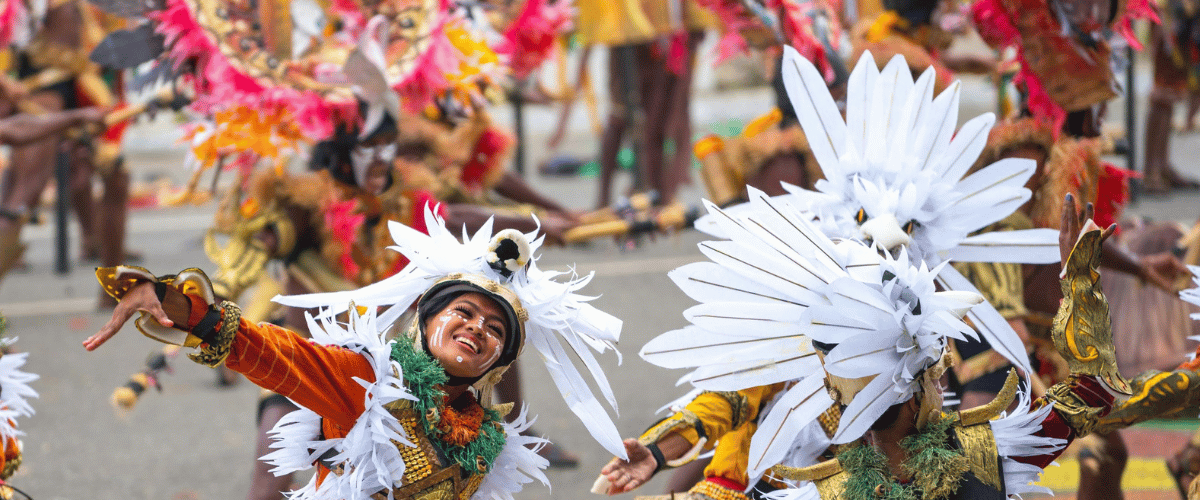
Pop Culture & Entertainment in the Philippines
A Nation of Stars and Stories (80 words)
From ubiquitous love songs to captivating television dramas, Filipino pop culture is omnipresent and intertwined with the Philippines’ deeply emotive and expressive ethos. In 2025, the Philippines remains the leading region in Southeast Asia for entertainment exports, thanks to its energetic music, viral dances, and domestically produced films. Whether watching a teleserye with locals or karaoke-ing with new friends, Filipino pop culture is not only consumed but also shared, celebrated, and integrated into daily life.
What to Explore in Filipino Pop Culture
OPM – Original Pilipino Music
Ballads and love songs dominate the airwaves — think Moira, Ben&Ben, Zack Tabudlo.
K-Pop influence blends with local sounds in rising pop-rock and indie scenes.
Try catching a live gig in Quezon City or Makati, or stream top hits on Spotify Philippines.
Teleseryes (Soap Operas)
Daily hit dramas like Ang Probinsyano or Batang Quiapo attract tens of millions of viewers nightly.
Common themes include family, love, revenge, and redemption, always delivered with melodramatic acting and intense performances.
Asking locals about their favorite shows is fun as they will be eager to join the conversation.
Influencers & Online Trends
TikTok reigns – expect catchy challenges, comedy skits, beauty tutorials, and more.
Rising stars such as Andrea Brillantes, Niana Guerrero, and Mimiyuuuh are considered national treasures.
Lifestyle and travel vlogs on YouTube are especially popular.
Cinema of the Philippines
From romantic comedies to independent films, local cinema serves as a mirror of the Filipino spirit.
The Cinemalaya Film Festival, held annually, is devoted to showcasing innovative and original Filipino storytelling in cinema.
These Are the Classics Heneral Luna and moderns like Hello, Love, Goodbye.
Karaoke Culture
This is far from work; it’s an essential part of daily living.
Karaoke machines can be found in almost every home and even on the streets. Join the fun.
Did You Know?
With a massive player base in games like Mobile Legends and Valorant, the Philippines has emerged as one of Asia’s top hubs for e-sports and mobile gaming.
Pop Culture in Daily Life – FAQ
Is English used in media by Filipinos?
Yes. Most shows and songs are in Tagalog and mixed withEnglish so it is easy for foreigners to follow.
May I be a part of a live show taping?
Absolutely, that’s quite common in Manila, where local television networks frequently offer free tickets for those interested in joining the studio audience.
Is it alright if I take part in the dances on TikTok?
For sure! Filipinos will love you for that. Just enjoy joining in.
Pro Tip
Make sure to download Spotify PH, iWantTFC, or TikTok PH to keep abreast with trends within the region before or during your travel.
Conclusion: A Mirror of the Filipino Soul (50 words)
Joyful yet dramatic is the essence of the Filipino spirit and culture. It reflects the people’s indefatigable spirit, compassion, and artistic imagination. Engage with the culture by immersing yourself in teleseryes, belting out karaoke, or scrolling through TikTok. No matter the medium, you will feel the Filipino heartbeat.
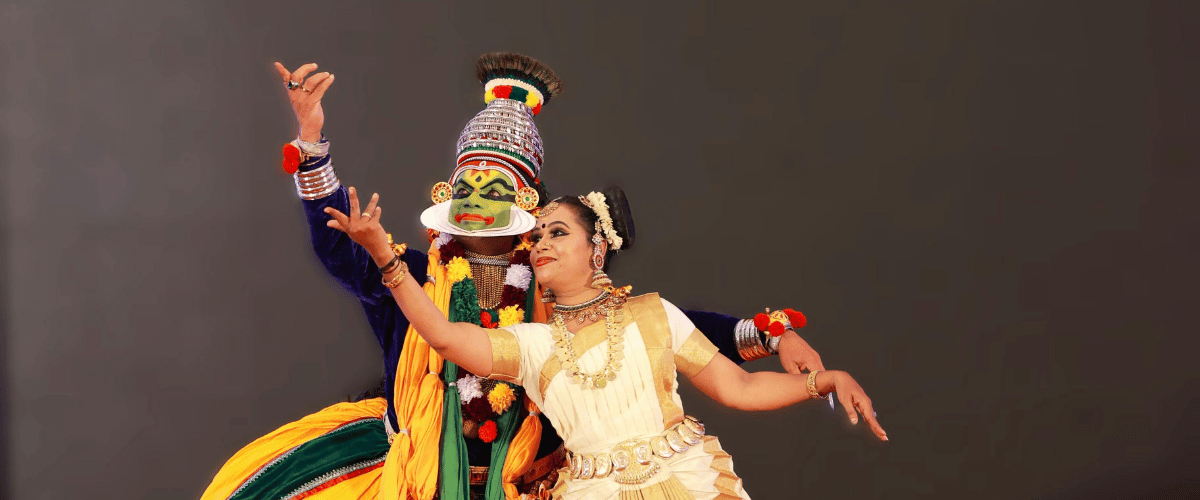
Shopping & Souvenirs in the Philippines
What to Bring Home from the Islands
The Philippines is a treasure trove of memories and meaningful mementos. Each souvenir, from handwoven textiles to local delicacies, narrate tales of culture and artistic ingenuity. In 2025, tourists will be able to access city shopping malls and rural artisan markets. Whether traditional or modern, these keepsakes promise a deep connection to rich Filipino culture, exquisite cuisine, and immense national pride.
Top Souvenirs to Buy in the Philippines
Barong Tagalog & Local Wear
Every Filipino occasion warrants the Barong, an embroidered formal shirt. It can also serve as a statement piece.
Do not miss out on regional woven textiles such as inabel from Ilocos and t’nalak from Mindanao.
South Sea Pearls & Jewelry
The Philippines is known for molding some of the world’s finest golden pearls.
You may purchase from trustworthy jewelers in Palawan and Manila for certified items.
Dried Mangoes & Local Delicacies
Banana chips and pastillas (milk candy) are treat that can be complemented with sweet Cebu dried mangoes.
For more local tastes, try bottled bagoong (shrimp paste) and ube jam from Baguio.
Handicrafts & Home Decor
Handicrafts like rattan bags, bamboo trays, and capiz shell decor make beautiful gifts.
Visit Greenhills (Manila) or local markets in Davao and Bohol for these items.
Natural Beauty Products
Herbal balms and papaya soaps are some beauty products that are affordable and available.
Look out for Human Nature or Zenutrients as they have branded organic products.
Where to Shop
Greenhills Shopping Center (Manila) – best for purchasing pearls and other souvenirs.
SM Malls – conveniently located for shopping throughout the country.
Aklan, Baguio, and Ilocos – renowned areas for regional crafts and weaves.
FAQ – Shopping in the Philippines
Is bargaining allowed?
Yes, particularly in public markets. Always remember to be polite while smiling during the negotiation process.
Can I bring food products abroad?
Yes, check customs rules for dried fish or fruit, but generally yes.
Are credit cards accepted?
Yes and no. In most smaller markets, credit cards are not accepted and cash should always be carried on hand.
Did You Know?
Some of the world’s most beautiful Christmas lanterns (parol) are exported from the Philippines, particularly Pampanga, and are sold year-round in some shops.
Pro Tip
If you are traveling internationally, make sure to check out the duty-free shops located at NAIA or Cebu airport as they offer great Filipino products for amazing prices.
Conclusion: Thoughtful Treasures To Remember By
Souvenir shopping in the Philippines isn’t just retail therapy; it’s a journey enriched with culture. The distinct artistry, traditions, and flavors of the handwoven textiles and perfected boxed mangoes tell the world the story of Philippines. Embrace the joy while selecting these treasures done with care.
